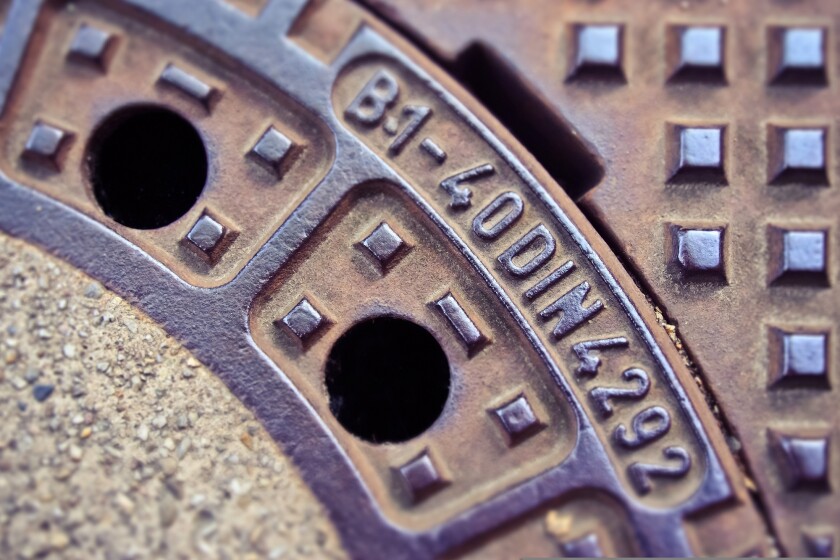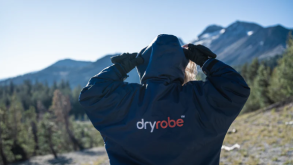This article focuses on the recent decision of the Hon’ble Delhi High Court in the case of Sholay Media Entertainment & Anr. v Yogesh Patel & Ors.; CS (COMM) No.8/2016, passed by Hon’ble Ms. Justice Prathiba M. Singh on May 9 2022.
The judgment decided a very important issue pertaining to trademark rights in film titles. This has become very relevant in the recent past given the rising number of disputes involving movie titles, which reflects the recognition that a title can have immense inherent commercial value.
Protection of film titles
The Hon’ble Court in the above case pertinently held that “certain films cross the boundaries of just being ordinary words and the title of the film ‘SHOLAY’ is one of them”. The Hon’ble Court, while reaching this finding, quoted decisions that lay down tests to qualify whether movie titles merit trademark protection. These cases held that movie titles are entitled to trademark protection so long as they have achieved a secondary meaning.
Secondary meaning is a legal construct under trademark law that means that the mark in question has lost its primary significance and meaning, and has now become synonymous with a particular source, acting purely as a source identifier for the product or service. The requirement of secondary meaning is necessary for film titles since they are not considered inherently distinctive like coined, arbitrary, and fanciful trademarks (the spectrum of distinctiveness was discussed by the Hon’ble Delhi High Court in the 2019 case of Bata India v Chawla Boot House and Anr.).
For a film title to achieve a secondary meaning, there is no litmus test and the same principles that apply for regular trademarks would equally be applicable for film titles. For instance, some of the following may help to demonstrate secondary meaning of a film title:
If the film remains in movie theatres for a long time;
If the movie has achieved cult status, having become so popular that it has left an indelible mark on the public’s consciousness;
If the film has had extensive promotional activities;
If the film has been widely advertised; and
If the film has entered into licensing deals, etc.
It is easier for titles of movie series to be protected under trademark law since, over a period of time, such titles indicate the same source and start functioning as trademarks. For example, the Godfather series of films or the Rocky and Star Wars franchises.
Another category of movie titles that are easier to protect as trademarks are ones that are unique and unusual, as it is easier for them to achieve a secondary meaning; for instance, The Shawshank Redemption, and One Flew Over the Cuckoo’s Nest.
This leaves a third category of film titles, which are words of common parlance, generally selected based on the theme of the movie. These are tougher to protect as they are often considered descriptive. It takes a very strong showing of secondary meaning to register these as trademarks.
Trademark registrations
It is always good practice to apply for the registration of movie titles as trademarks. Trademark registrations for film titles are sought under Class 9 (covering cinematographic films) and Class 41 (motion pictures). Registration of a film title with only a local film trade association (there are 16 such associations in India, with four associations that pertain to the Hindi film industry) will not confer trademark rights. Film trade associations only register titles for administrative convenience.
When film titles are registered as trademarks with the Trademark Office, enforcement becomes easier as one can file a trademark infringement action, as opposed to a passing-off action, which requires more evidence. In Kanungo Media (P) v RGV Film Factory & Ors. (2007), the Hon’ble Delhi High Court held that in passing-off cases involving movie titles, “the necessary ingredient to be established is the likelihood of confusion. For establishing this ingredient it becomes necessary to prove that the title has acquired secondary meaning. Thus, in case of unregistered title the following ingredients are to be proved in order to triumph in an injunction suit:
Title has acquired a secondary meaning; and
There is likelihood of confusion of source, affiliation, sponsorship or connection of potential buyers/audience/viewers.”
The most obvious hurdle faced while seeking protection of movie titles as trademarks is that consumers are not generally predisposed to treat film titles as indications of source, guarantee, or quality, like a product that consumers know would match their expectation in respect of quality if it bears a particular trademark.
However, this does not mean that confusion will not ensue if a person releases a film with an identical title to a previous well-known film, since the concept of confusion is so dynamic and wide that there is a possibility of viewers forming some kind of association between two films bearing the same title. There is also a possibility of initial interest confusion, especially in the event of a film remake.
The Sholay ruling
In the Sholay case, while reaching its finding, the Hon’ble Court took into account the acclaimed status of the film SHOLAY in India, as was recognised by the Hon’ble Bombay High Court in the case of Anil Kapoor Film Co. v Make My Day Entrainment & Anr; 2017 SCC OnLine Bom 8119. Moreover, the plaintiff in this case had also presented voluminous evidence of the film having attained widespread renown and success over a period of 50 years since its release.
This is not the first time that rights in the film SHOLAY have been recognised by a court. In Sholay Media and Entertainment & Anr. v Parag Sanghavi & Ors.; 2015 (4) PTC 546 (Del), the Hon’ble Delhi Court, vide its judgment dated August 24 2015, recognised the well-known nature of the SHOLAY trademark as also copyright in the film and its constituent elements.
The Hon’ble Court recognised the exclusive rights of the plaintiff under Section 14 of the Copyright Act, 1957 in relation to the script and screenplay of the film, the sound recording and background score, the underlying music in the sound recording, the underlying literary works, artistic works, and dramatic works. The court also held that the characters in the movie SHOLAY – Gabbar, Basanti, Jai, and Veeru – were also worthy of protection. This is a case where the defendant had sought to release a film titled Ram Gopal Verma Ke Sholay that had a plot, theme, and characters similar to the original SHOLAY movie.
With the latest Sholay judgment, the Hon’ble Court has again protected the SHOLAY trademark in respect of certain online activities that the defendant had been engaged in. The Hon’ble Court laid particular emphasis on the Internet being a powerful platform for dissemination and the chances of confusion likely in the case, in view of the defendant operating a formative SHOLAY website.
Protection of film characters
Apart from the issue of film titles being worthy of trademark protection, another interesting issue is the copyrightability of characters in films, plays, comics, and other literary works.
Under copyright law, graphic characters (for example, comic characters such as Superman and Spider-Man) and literary characters (such as the hugely popular Sherlock Holmes character created by Sir Arthur Conan Doyle) can be protected, with it being easier for graphic characters to obtain protection since they are easier to perceive visually.
Such is the importance of the protection of iconic characters that it is said that the United States of America extended the term of protection in respect of the famous Mickey Mouse character through the Copyright Act of 1976 and again by enacting the Sonny Bono Copyright Term Extension Act of 1998, to ensure that the same does not fall into the public domain.
Internationally, there are two tests on the basis of which the copyrightability of characters is determined; namely:
The character delineation test; and
The story being told test.
The tests are only used to judge the copyrightability of the characters. Apart from this requirement for the purpose of establishing infringement, the claimant would have to show ‘substantial similarity’ between the two works. The test to establish infringement of copyright was succinctly laid down by the Indian Supreme Court in the case of RG Anand v Delux Films, AIR 1978 SC 1613. The court held that one of the safest ways to determine whether there has been a violation of copyright is to see if the reader gets an unmistakable impression that the subsequent work appears to be a copy of the original.
The character delineation test
The first test for determining the copyrightability of characters, the character delineation test, is more commonly used by courts and is quite evidently the more appropriate approach. This postulates that if the character is sufficiently developed, it is worthy of protection. If the character is clothed with sufficient detail and has achieved an identity of its own dehors the story, it can be said that the character is sufficiently delineated.
For instance, the character of Rocky in the Rocky series of films was held to be sufficiently developed, with unique characteristics, and worthy of copyright protection (Anderson v Stallone, 11 U.S.P.Q.2d 1161). Similarly, characters such as Superman and Spider-Man also easily qualify under this test.
Sometimes, even specific elements of these characters are protectable. For example, the glove worn by the character Freddy Krueger in the movie A Nightmare on Elm Street or the costume of Superman with a red cape is independently capable of being protected.
In India, in the case of Raja Pocket Books v Radha Pocket Books (1997), the character of Nagraj was held to be sufficiently developed with unique characteristics, possessing snake-like features and the ability to climb walls and roofs, and release snakes from any part of his body. The defendant’s comic character had a similar appearance or characteristics. The Hon’ble Court held that the central idea of the two characters was the same and that the spectator or the viewer, upon going through both the works, would get an unmistakable impression that the defendant’s comic character Nagesh was a copy of the Nagraj character.
From the above, it becomes apparent that the court adopted the character delineation test.
The story being told test
The second test is the story being told test, which states that unless the character constitutes the central theme of the story being told, the character will not be protected. Courts have stated that if the character is a mere ‘chess piece’ in the story, protection would not extend to the character. Similarly, if the character is a mere vehicle to take the story forward, copyright would be denied (Warner Bros. v Columbia Broadcast Systems; 216 F.2d 945,950 (9th Cir. 1954) – the test is popularly known as the Sam Spade Test).
The story being told test clearly presents a harder threshold, rendering many characters undeserving of protection. A character may be unique and developed but may not be the central theme of the film, since various components go into the making of a film. Some courts have even expressed their reservations on applying this test.
The need for flexibility
Perhaps, rather than having a rigid bright line to determine the copyrightability of characters and to determine infringement, one should recount the famous expression of Justice Potter Stewart of the US Supreme Court when he was dealing with a case involving obscenity: “I shall not today attempt further to define the kinds of material I understand to be embraced within that shorthand description, and perhaps I could never succeed in intelligibly doing so. But I know it when I see it, and the motion picture involved in this case is not that.”
In other words, each case may present unique circumstances and elements that would require the judge to decide every case on its own facts, whenever they are satisfied that ‘they have seen it’.
While film titles and characters constitute protectable subject matter, it is imperative that right-holders approach court without any delay.













